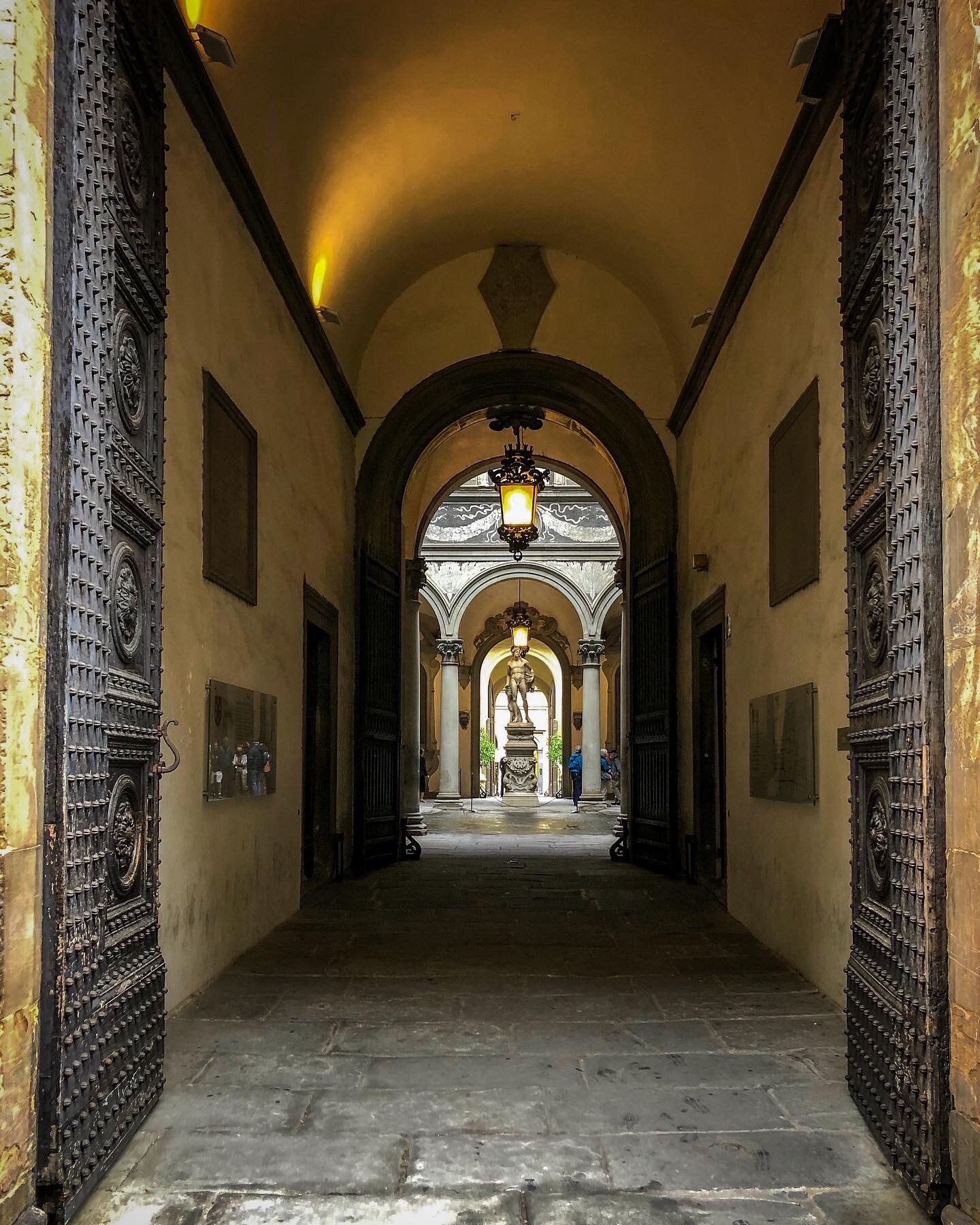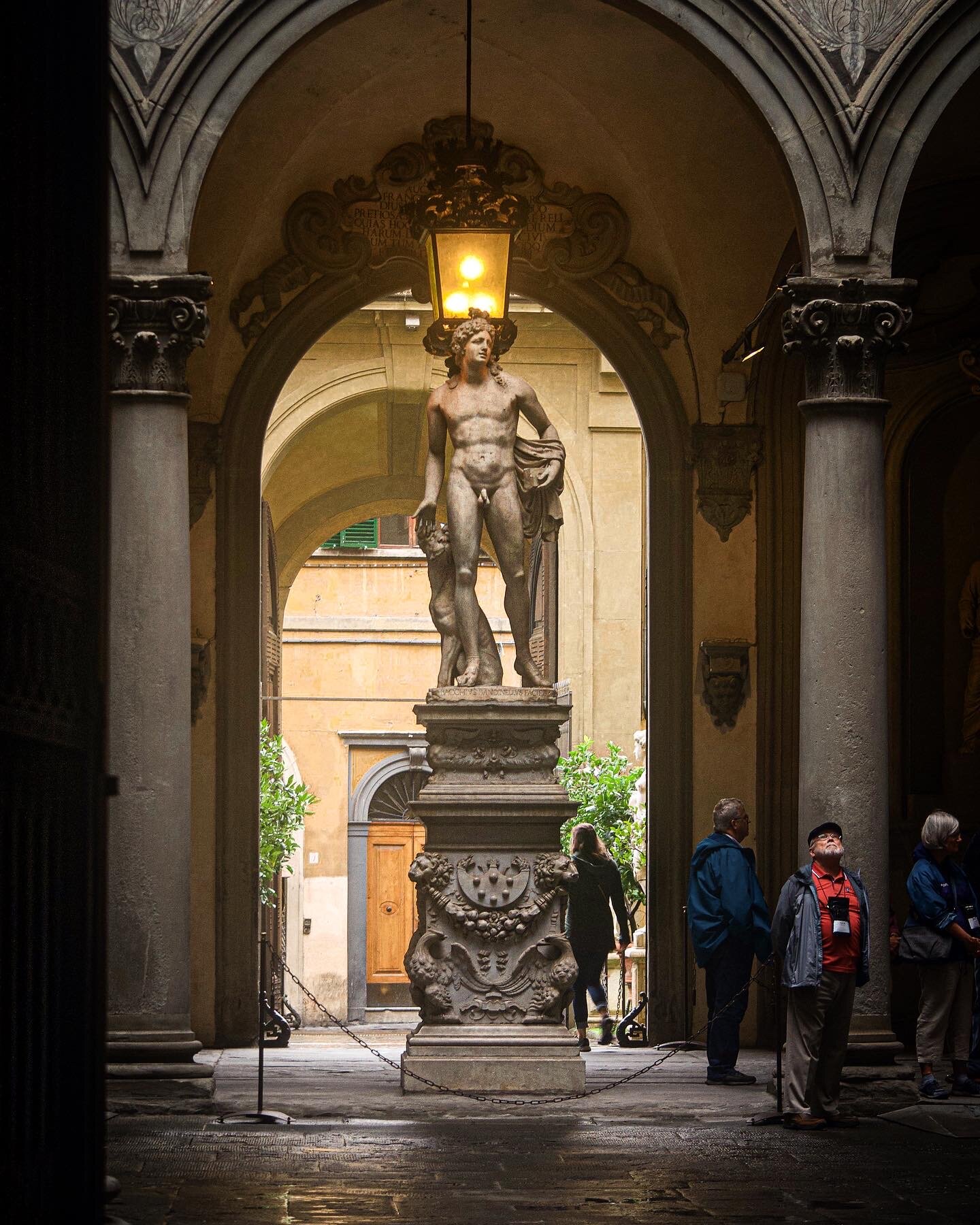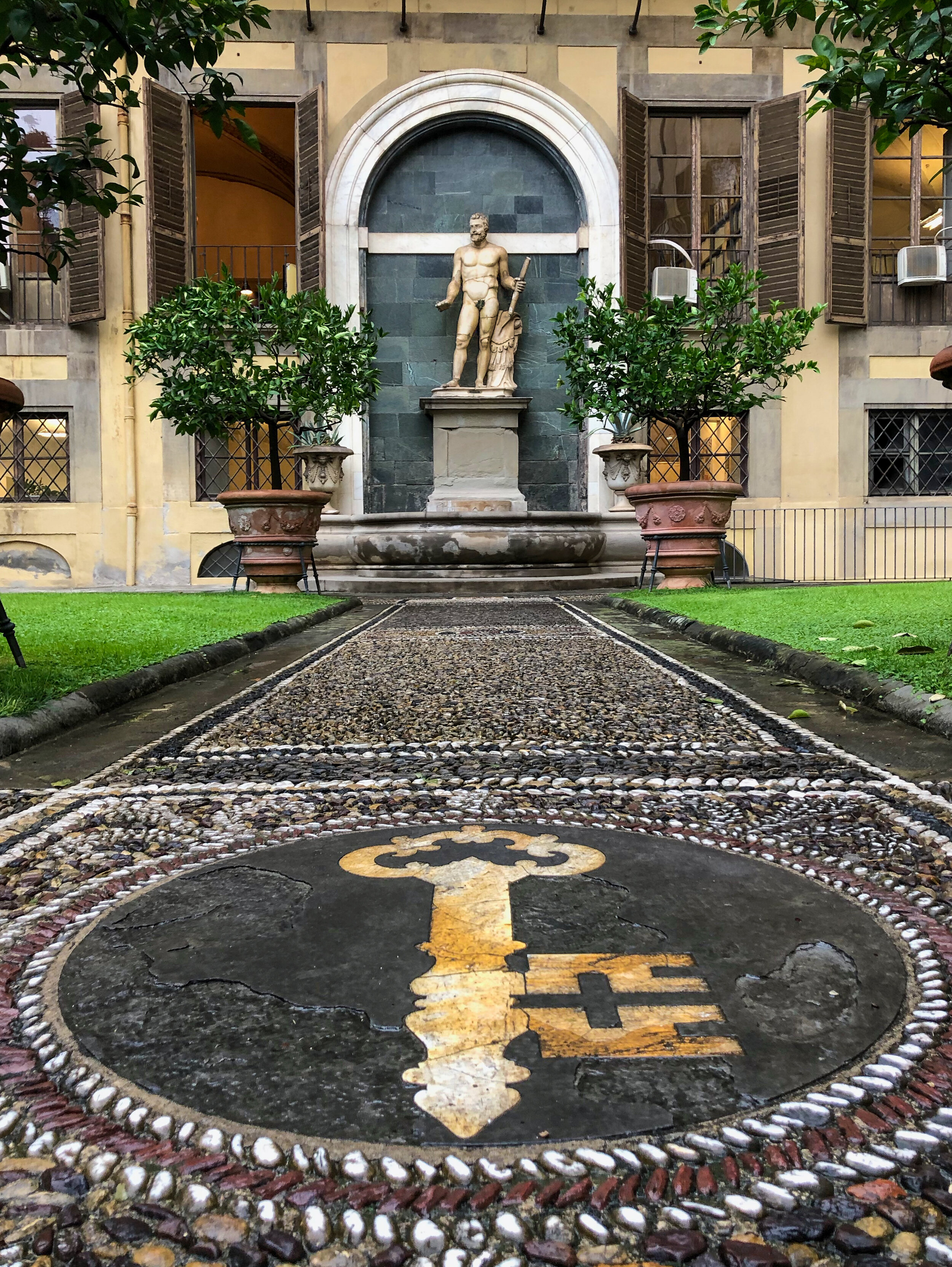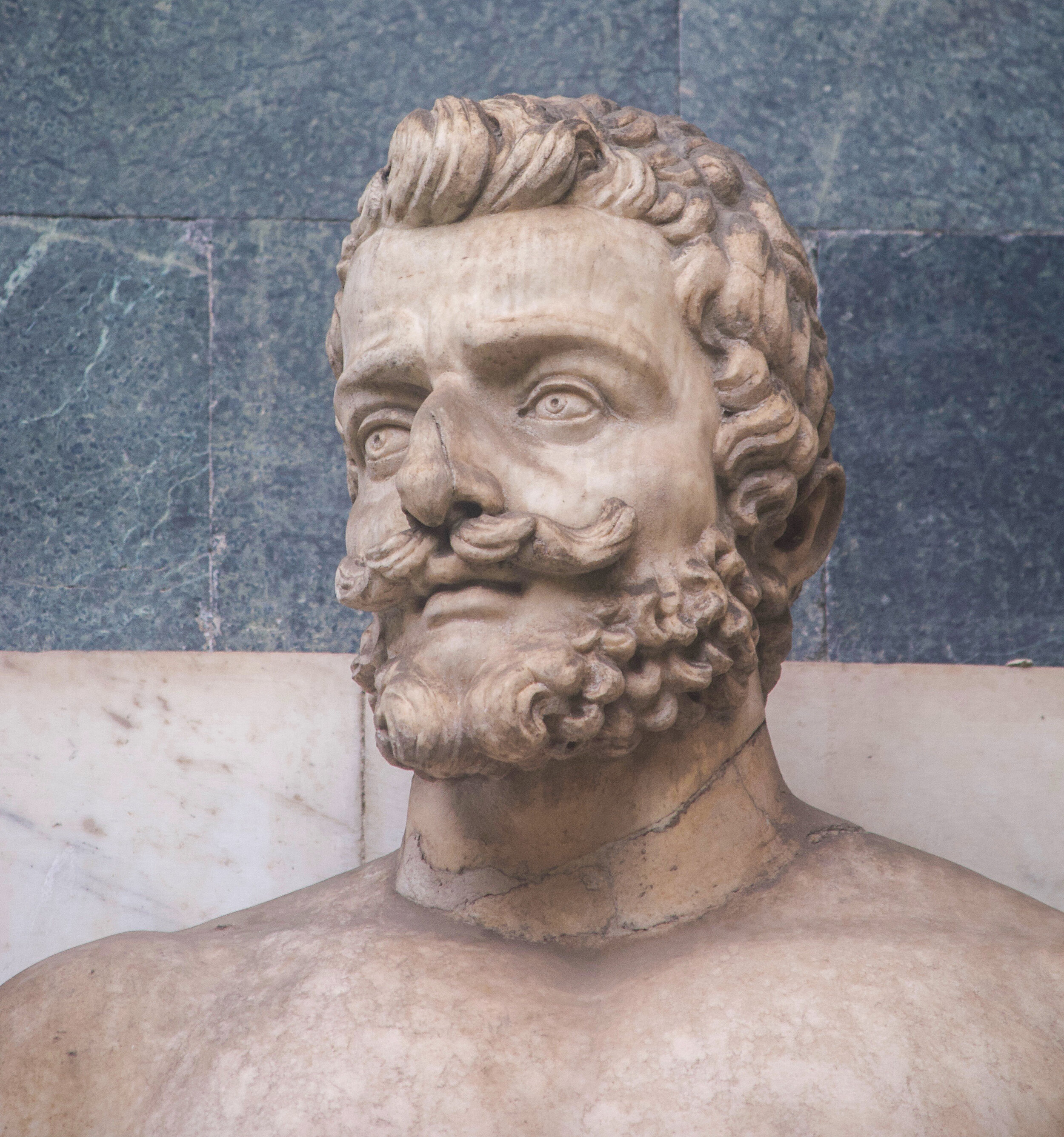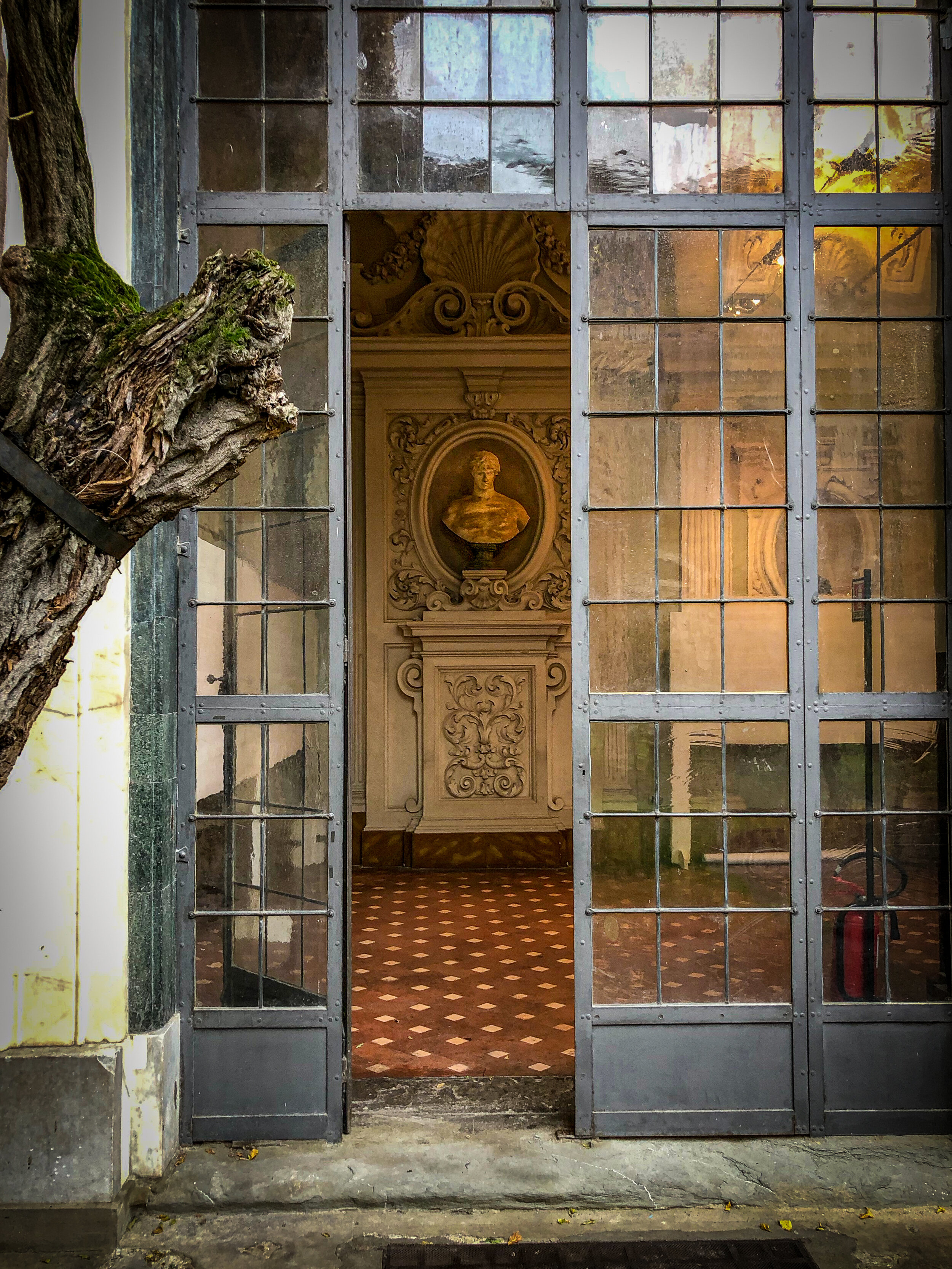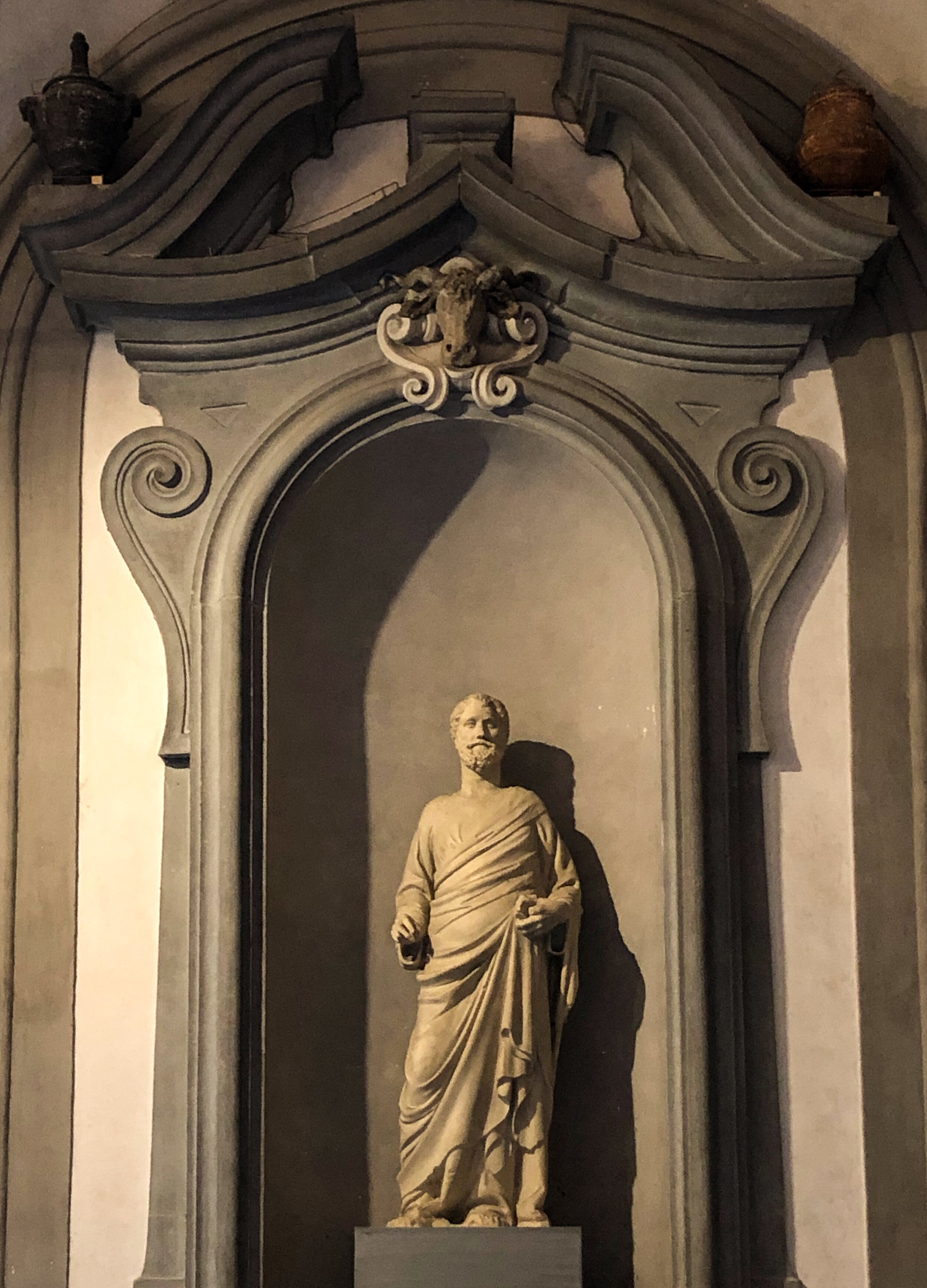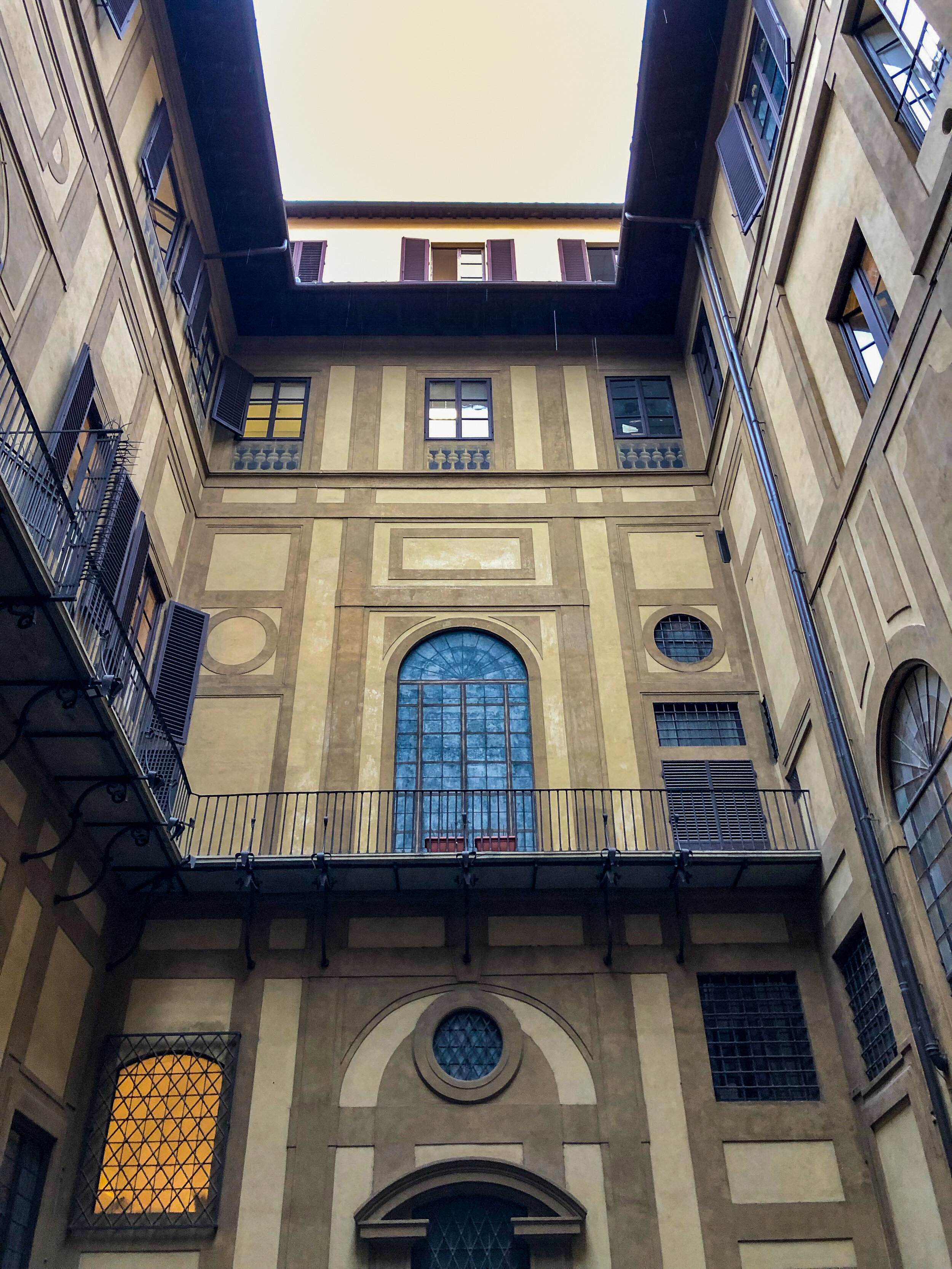As I roamed Florence’s rain-soaked streets with my cameras early one morning, I chanced upon an imposing centuries-old building with a rocky facade nestled in the heart of the city.
A sign on the wall of the tall, long entrance hall read: “[Riccardi-Medici Palace] constitutes one of the fundamental models of civil architecture in the Renaissance.” Cosimo de’ Medici “the Elder” commissioned architect Michelozzo di Bartolomeo in 1444 to design the palace as the primary residence for his politically powerful family, and construction was completed in 1460.
The hall led to the central Courtyard of Michelozzo, distinguished by Corinthian columns and an oversized statue of Orpheus (by Baccio Bandinelli) standing atop a tall pedestal. Above the colonnade, a frieze is adorned with 12 marble medallions of mythological figures and the Medici coat of arms, along with monochrome sgraffito festoons all sculpted by Maso di Bartolomeo.
From the courtyard I explored the adjacent walled garden dotted with sculptures, a Hercules-manned fountain, and stone mosaic paths lined with potted lemon trees. A path featured a key representing the emblem of the Riccardi banking family that purchased the palace from the Medici in 1659, after which it was enlarged and modernized in the Baroque style.
Too early for visitors to enter the building, I walked back onto the street and snapped photos of the three-story sectional facade consisting of rusticated blocks at the bottom and progressively smoother materials above.
Later, reading about the palace’s history, I also learned that a Republican government that seized power in Florence in 1494 banished the Medici and confiscated the palace and all the family’s belongings therein. The Medici returned to the city in 1512 and reclaimed their palace, which remained their prime residence until Cosimo I relocated it to the Palazzo Vecchio in 1540.
The Riccardi family sold the building in 1814 to the Tuscan state that set up an administrative office there until 1874. The complex has since housed the seat of the Metropolitan City of Florence that shares it today with other tenets, including an underground museum featuring the Riccardis’ art collection.


